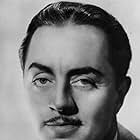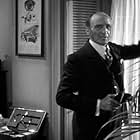Reported killed in action, Philip lives under an assumed name in London. Deborah, a former lover, discovers him. She still loves Philip and is jealous of his wife Faith, who has since marrie... Read allReported killed in action, Philip lives under an assumed name in London. Deborah, a former lover, discovers him. She still loves Philip and is jealous of his wife Faith, who has since married Sir John. So Deborah tries to blackmail Faith.Reported killed in action, Philip lives under an assumed name in London. Deborah, a former lover, discovers him. She still loves Philip and is jealous of his wife Faith, who has since married Sir John. So Deborah tries to blackmail Faith.
- Awards
- 3 wins total
Doro Merande
- Deborah's Maid
- (uncredited)
Storyline
Did you know
- GoofsWhile putting down the telephone receiver (21 mins.), Doris Kenyon's earring falls off.
- ConnectionsRemade as Without Regret (1935)
Featured review
Not a great film, or even a very good one, the main point of interest in watching Interference is its place in history.
In 1928, most film theaters were either owned by a film studio or "block" booked so that a patron of that venue would always see a Fox Film (if it was a "Fox" theater), a Paramount film (if it was a Paramount theater) and so on. Indeed, to this day, many old palaces still bear these logos though the practice ended mid-century. For a large chunk of filmgoers, this was the birth of a new art form. And for this reason, for me, watching "Interference" was irresistable.
I viewed an old MCA TV 16mm print (on tape) that had been transferred using the 1:16 Movietone matte. This matte normally obscures the soundtrack which intruded the left side of the picture until 1931. Films of this period were usually sent to theaters according to the sound system that particular theater used: sound-on-film or Vitaphone disc. [Also very confusing for directors struggling for decent photographic composition] This print had sound on disc and consequently the titles and action got cropped on the left side.
Our story concerns a war veteran (Powell) attending a memorial service. As he had been erroneously reported as killed in action, an old girlfriend (Brent)is shocked to see him. She gives chase, and it is revealed his wife has married and English lord. The girlfriend threatens to tell and the 'interference' begins.
William Powell is very watchable, until he does his drunk scene. Unfortunately, I've seen all the 'Thin Man' films and have seen him take 'tipsy' to new heights. His hand movements, here, are smooth and precise. Evelyn Brent is even better, giving a real star performance of a confused, vengeful mistress. Mr. Brook 's just fine, adequately uppity. The thing just falls apart with Doris Kenyon's scenes. She's lost and I fault the director, J. Roy Pomeroy. It's just so obvious, all of her lines are delivered like questions, with the inflection tailing up at the end.
Now, J. Roy Pomeroy had never directed a film before. In a perfect example of being in the right place at the right time, Pomeroy was head of the special effects department at Paramount when a committee to study the sound "fad" was formed. He was named technical advisor to study which sound system (Vitaphone disc, RCA or Western Electric sound-on-film) was superior for Paramount, MGM, Universal, First National and Producer's Distributing Organization. His decree was each were perfectly satisfactory, the confusion began. A quote given to Variety in 1928: "One year will be required to photograph a feature picture accompanied by a complete dialogue duly recorded by a soundtrack." The 'expert' went on to point out that in a dialogue, silence must follow each character's speech lest the audience become lost. Pomeroy worked on the post-synchronized "Warming Up", a Richard Dix baseball comedy. First hand accounts sound hilarious.
Then, as an expert in a field of one, he was assigned to direct Paramount's first talker. He demanded his $250 per week salary be increased to $2,500. Henry Hathaway recalled he spat on you as he talked, "you'd get all wet." But he couldn't direct. "Interference" is the proof.
So enjoy the Lothar Mendes production touches and plot twists. I enjoyed imagining myself at a theater in 1928, seeing what all the fuss is about. Evelyn Brent fans should consider this a must-see.
In 1928, most film theaters were either owned by a film studio or "block" booked so that a patron of that venue would always see a Fox Film (if it was a "Fox" theater), a Paramount film (if it was a Paramount theater) and so on. Indeed, to this day, many old palaces still bear these logos though the practice ended mid-century. For a large chunk of filmgoers, this was the birth of a new art form. And for this reason, for me, watching "Interference" was irresistable.
I viewed an old MCA TV 16mm print (on tape) that had been transferred using the 1:16 Movietone matte. This matte normally obscures the soundtrack which intruded the left side of the picture until 1931. Films of this period were usually sent to theaters according to the sound system that particular theater used: sound-on-film or Vitaphone disc. [Also very confusing for directors struggling for decent photographic composition] This print had sound on disc and consequently the titles and action got cropped on the left side.
Our story concerns a war veteran (Powell) attending a memorial service. As he had been erroneously reported as killed in action, an old girlfriend (Brent)is shocked to see him. She gives chase, and it is revealed his wife has married and English lord. The girlfriend threatens to tell and the 'interference' begins.
William Powell is very watchable, until he does his drunk scene. Unfortunately, I've seen all the 'Thin Man' films and have seen him take 'tipsy' to new heights. His hand movements, here, are smooth and precise. Evelyn Brent is even better, giving a real star performance of a confused, vengeful mistress. Mr. Brook 's just fine, adequately uppity. The thing just falls apart with Doris Kenyon's scenes. She's lost and I fault the director, J. Roy Pomeroy. It's just so obvious, all of her lines are delivered like questions, with the inflection tailing up at the end.
Now, J. Roy Pomeroy had never directed a film before. In a perfect example of being in the right place at the right time, Pomeroy was head of the special effects department at Paramount when a committee to study the sound "fad" was formed. He was named technical advisor to study which sound system (Vitaphone disc, RCA or Western Electric sound-on-film) was superior for Paramount, MGM, Universal, First National and Producer's Distributing Organization. His decree was each were perfectly satisfactory, the confusion began. A quote given to Variety in 1928: "One year will be required to photograph a feature picture accompanied by a complete dialogue duly recorded by a soundtrack." The 'expert' went on to point out that in a dialogue, silence must follow each character's speech lest the audience become lost. Pomeroy worked on the post-synchronized "Warming Up", a Richard Dix baseball comedy. First hand accounts sound hilarious.
Then, as an expert in a field of one, he was assigned to direct Paramount's first talker. He demanded his $250 per week salary be increased to $2,500. Henry Hathaway recalled he spat on you as he talked, "you'd get all wet." But he couldn't direct. "Interference" is the proof.
So enjoy the Lothar Mendes production touches and plot twists. I enjoyed imagining myself at a theater in 1928, seeing what all the fuss is about. Evelyn Brent fans should consider this a must-see.
- arthursward
- Oct 25, 2002
- Permalink
Details
- Runtime1 hour 23 minutes
- Color
- Sound mix
- Aspect ratio
- 1.37 : 1(original negative)
Contribute to this page
Suggest an edit or add missing content



















